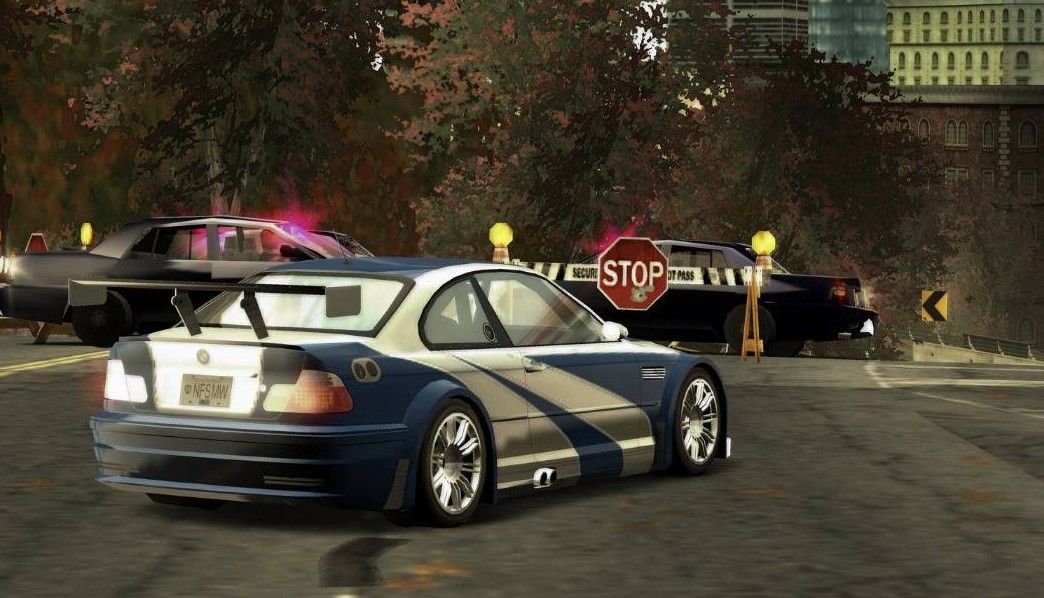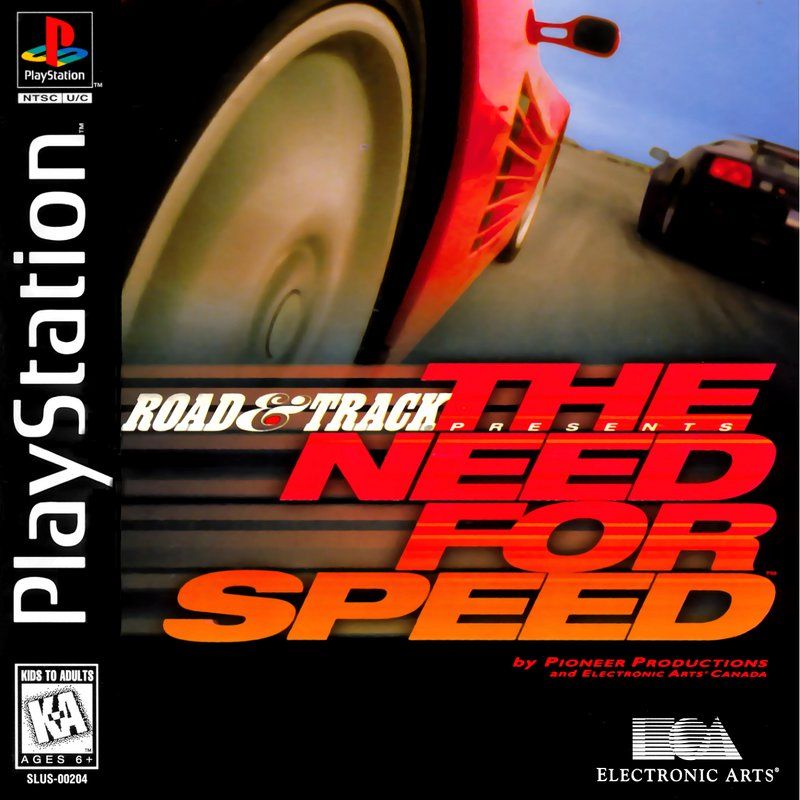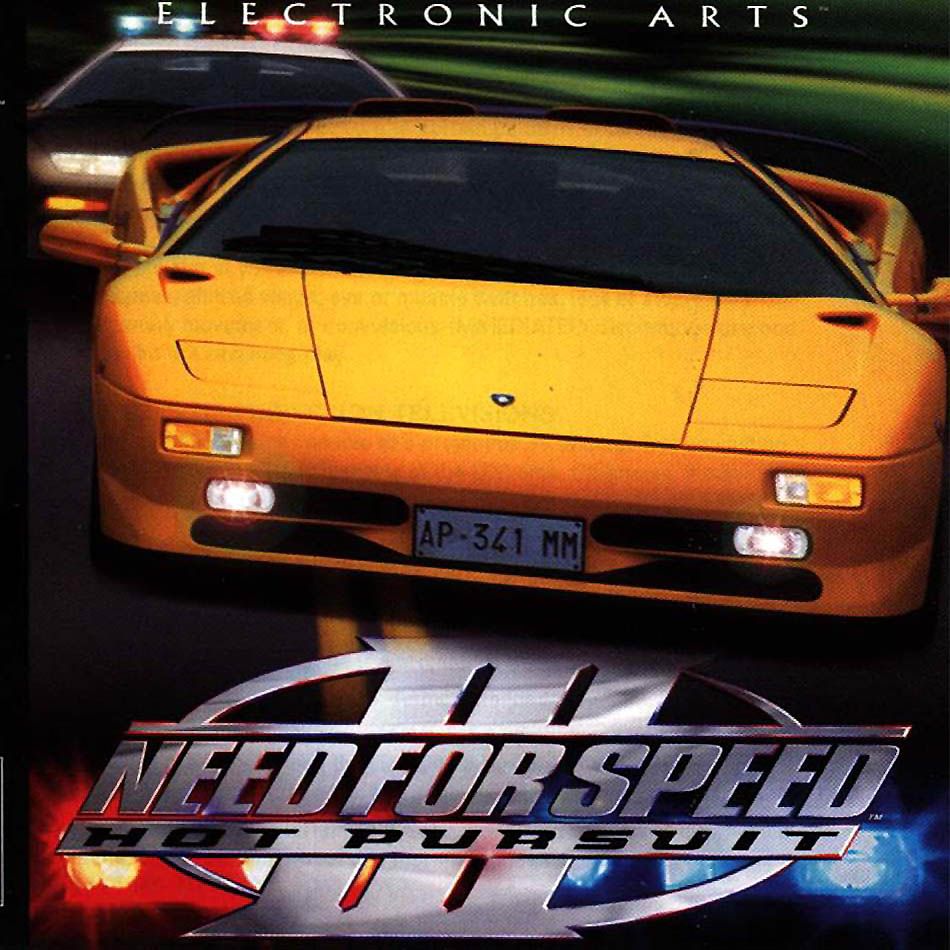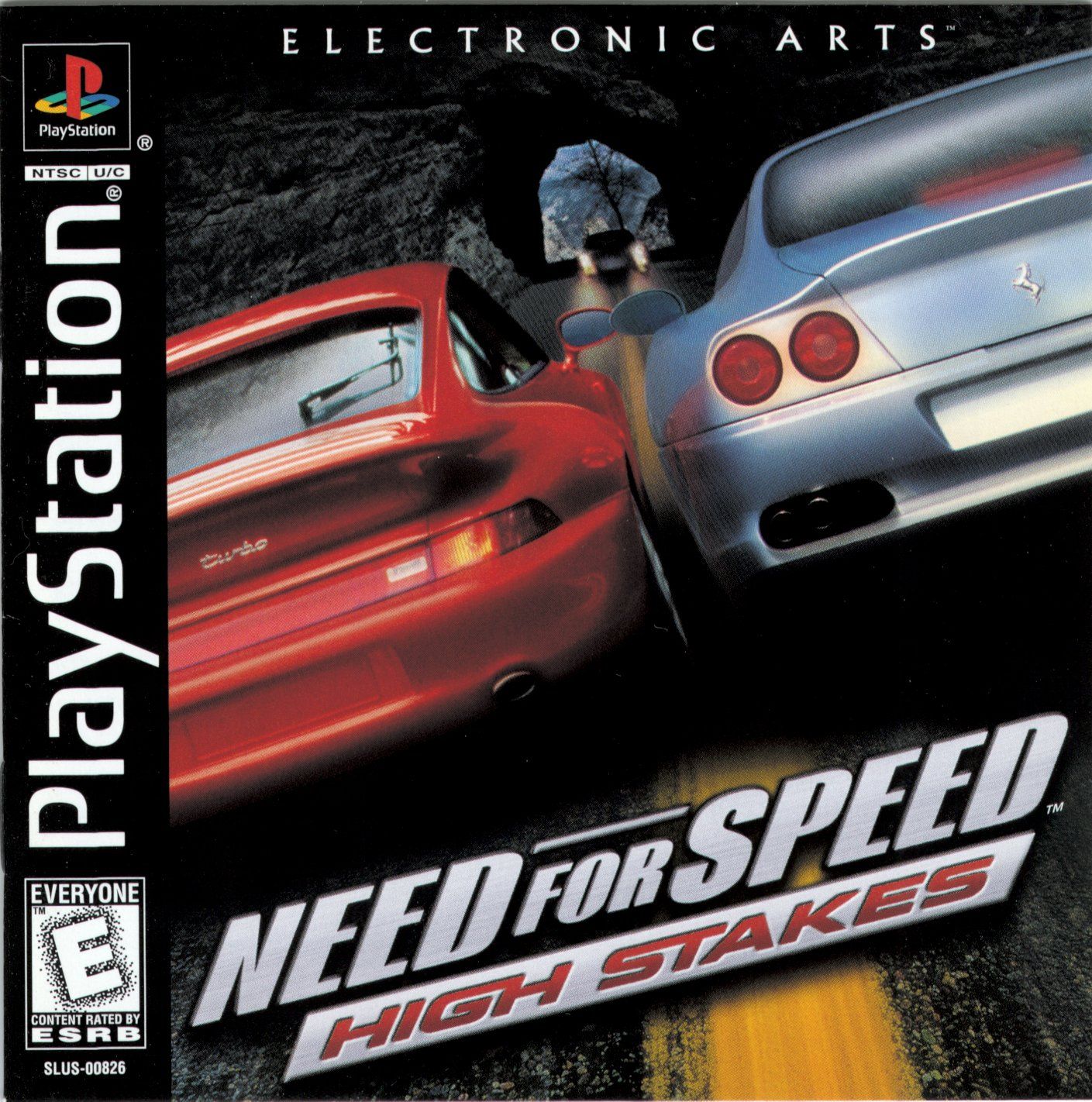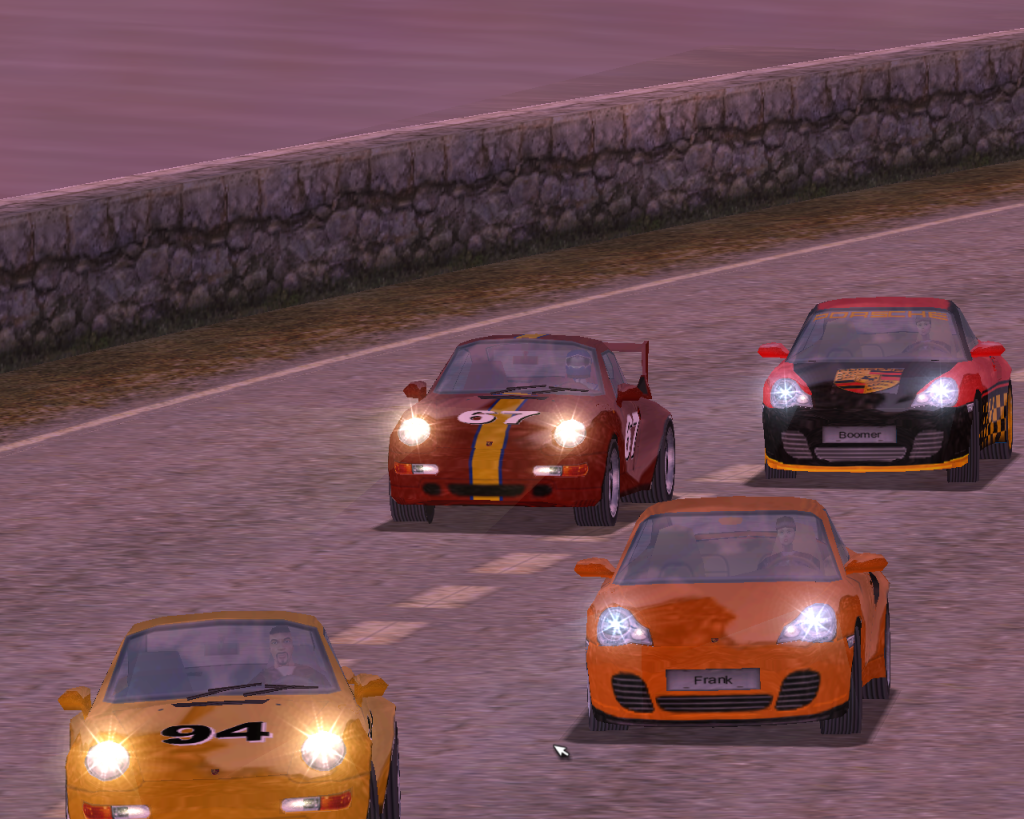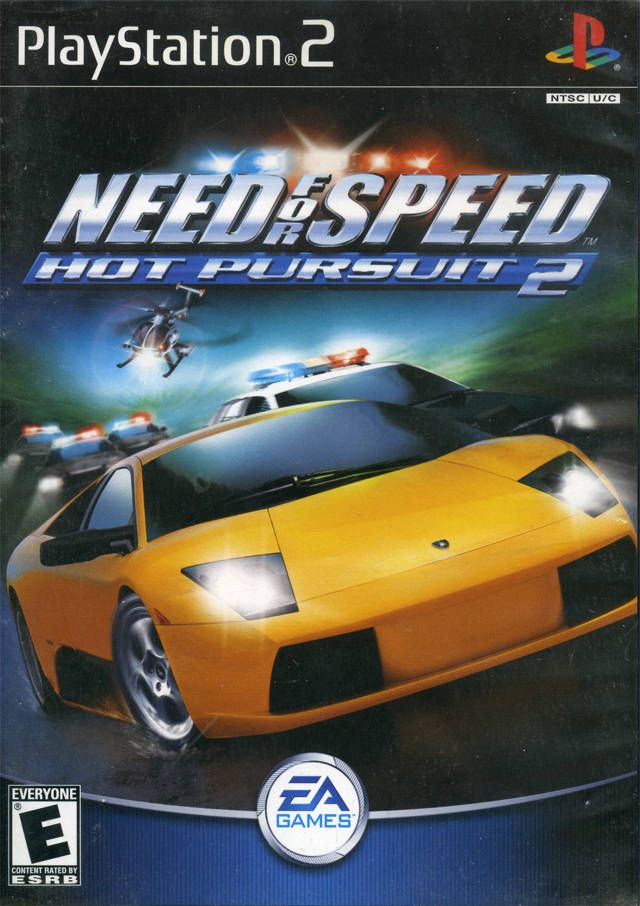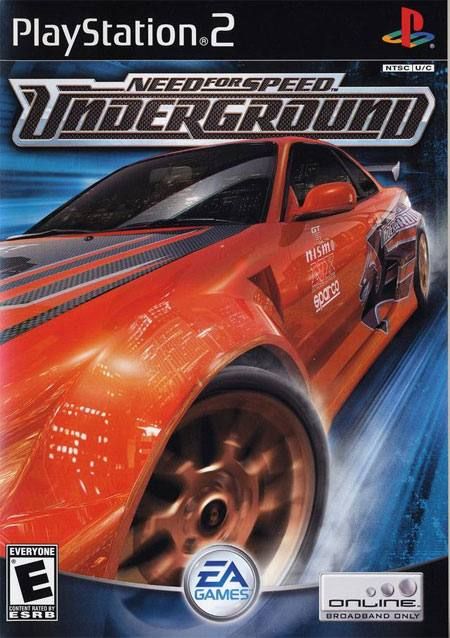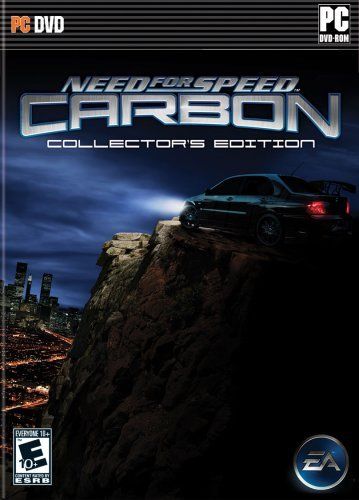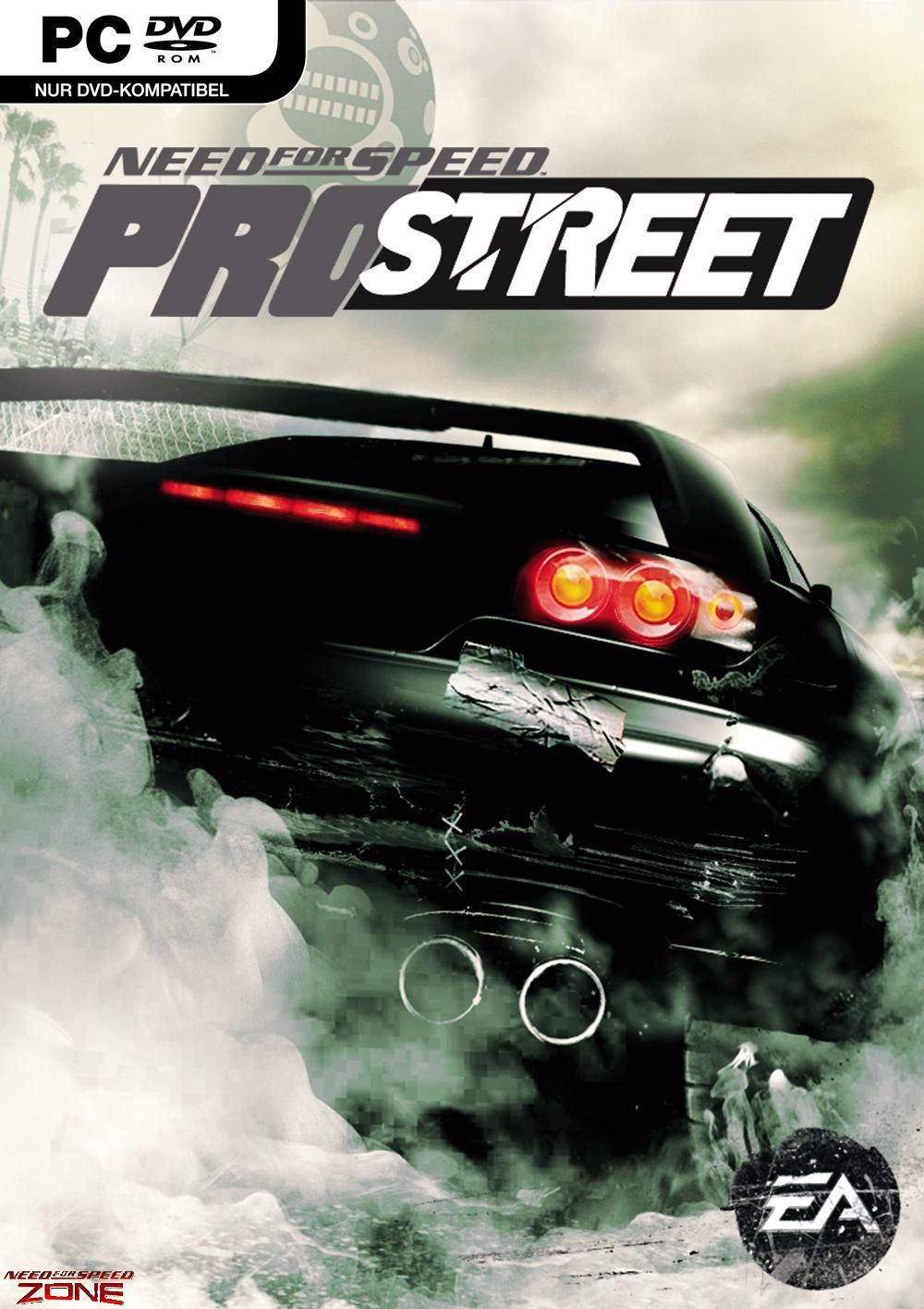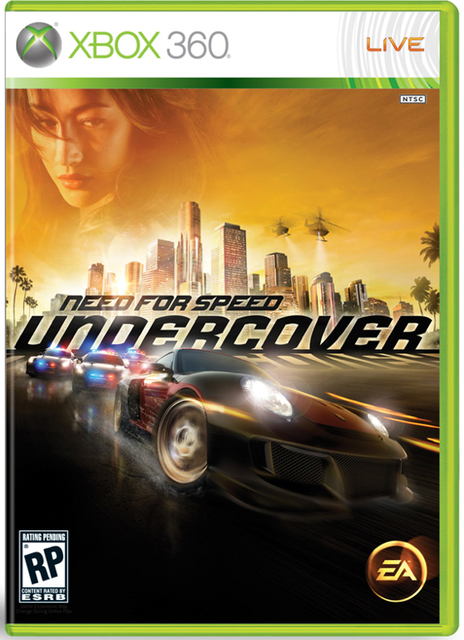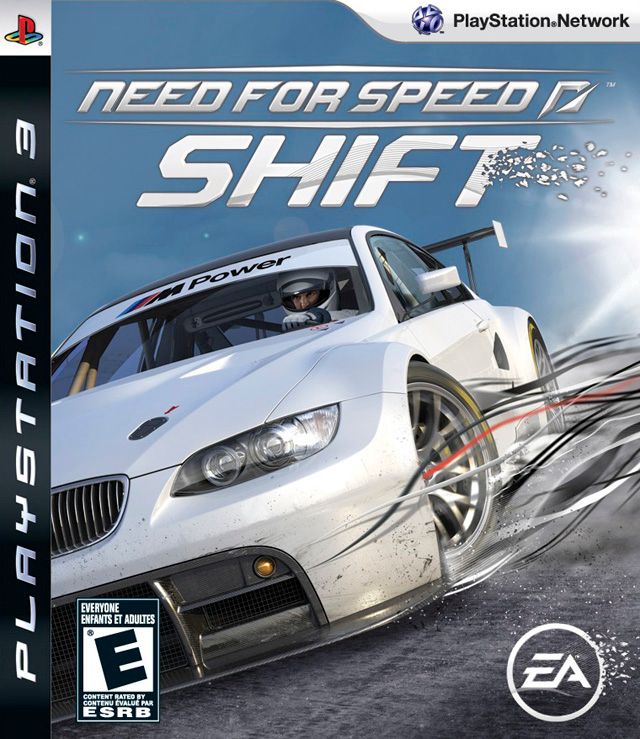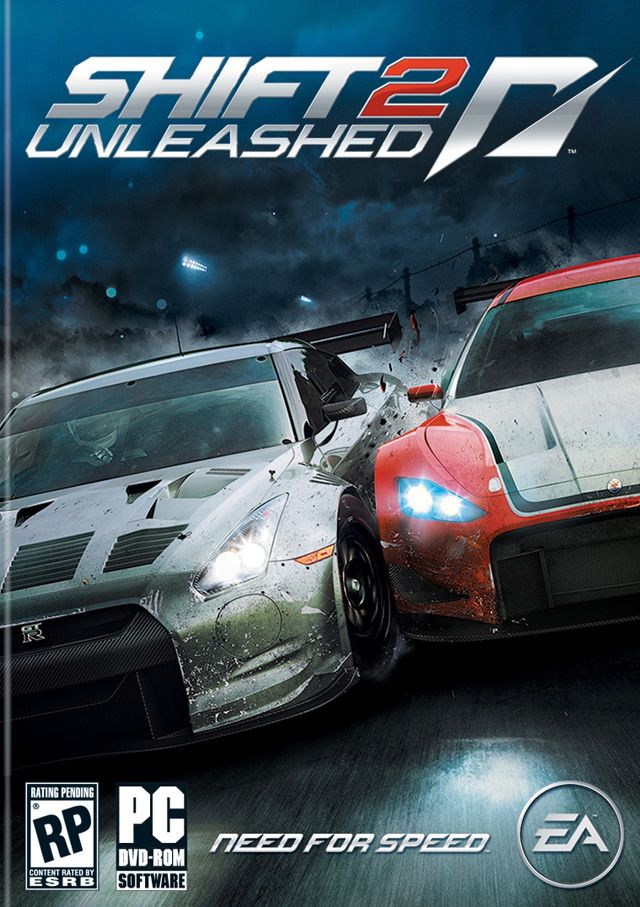The Need for Speed is a series that, as I stated in my review of its most recent game, The Run, has had its ups and downs. First released for the 3DO in 1994, the series has had many different iterations and has seen many changes to its gameplay. However, the core of the series has remained relatively stable throughout its lifetime, focusing on high speed street racing and cop chases. While some of the games have looked to be more simulation in nature, the vast majority of the games in the series have gone for over the top speed and racing rather than taking the proper line through a corner. Having played the series since its inception, at least since its PlayStation One debut, I decided that it isn’t a bad time for a look back at the series, considering the recent release of Need for Speed: The Run.
Road & Track Presents: The Need For Speed
That’s right, the first game in what would become a series that spanned over 15 years was conceived as a magazine tie in. It was also originally crafted for the 3DO and only later ported to the PC, PSX and Saturn. Leave it to EA to see the cash in on a title, even years ago. I kid of course.
The original Need for Speed was a lot of fun. It was not exactly revolutionary for its day, but it was well crafted, as players were outrunning police cars and competing in varied courses in cars like the Lamborghini Diablo and the Dodge Viper. The memories I have of playing this game at my friend’s house are great, as my friends and I all marveled at the then awesome-looking graphics as we argued about which super car we’d buy when we grew up. Hell, I would still love myself a 1994 Acura NSX, and this game is probably to blame for that. Looking at it now, it doesn’t look like much, but I can assure, back in the day, it was quite the step up from even other long lasting racing games like OutRun.
In spite of the cop chases and the street tracks, the Road & Track name meant the game was trying to be as real as possible. Of course it wasn’t anything quite like Gran Turismo, which came out a year later on PSX than Need for Speed did, but it was certainly more fun to play multiplayer, at least until its sequel came out.
Need for Speed II
http://www.youtube.com/v/gyEOQF_7Yt4?version=3&hl=en_US&rel=0
Need for Speed 2 was a step up from the original Need for Speed, especially in the car department. My friends and I went from arguing about the Lamborghini and the Ferrari 512 to arguing about other supercars to those friendly fights over the McLaren F1 or the Ferrari F50, which we knew from TV to be true track monsters. We also marveled at the even better graphics and the superior track design. To us, Need for Speed 2 was the better game because it was far more forgiving and arcade like in its gameplay. After all, Gran Turismo was coming out at the end of the year, so we would have that if we wanted to learn how to drive for real.
We were so into the game, or so into the cars is more like it, that we even took the time to watch the full motion video sequences for each of the cars, only strengthening our opinions over our chosen super car. Even so, we were in no way ready for the third game in the series.
Need for Speed III: Hot Pursuit
The original Hot Pursuit was released in 1998, a truly great vintage that saw games such as Metal Gear Solid, The Legend of Zelda: Ocarina of Time and Half-Life. To be honest, Need for Speed III stands among these games in my mind. Well, maybe not next to, but close enough that it is a game I can still throw into my PlayStation 3 and enjoy from time to time, similar to how the other three are still playable and enjoyable. It does not remain quite as refined as the others, but it is still fun. The track design really helps with that, but also the redone cop chases, where the police were far more aggressive. Of course the car selection was once again great, but I won’t discuss that too much anymore, as it is Need for Speed, the car selection is the one thing that has remained consistently awesome throughout each game.
There was something about Need for Speed III that made me love it more than any of the others. It may have just been that I had drifting down to a perfect science as a kid. Maybe it was the fact that I literally knew every track, the bonus track included, backwards and forwards. It is hard to explain, but even in the context of the following few titles, until Underground came out, but Need for Speed III just seemed to stick with me, and were it not for Most Wanted, I would likely consider this my favorite of the series. As it stands, it was definitely my favorite of the PSX titles.
Need for Speed: High Stakes
Just because III was so great does not mean that High Stakes was anywhere near a bad game. In fact it was far from the opposite, and objectively (rather than nostalgically speaking) it was even better than the original Hot Pursuit. High Stakes introduced at least one mechanic that caused at least one full on fistfight amongst friends, namely the titular High Stakes mode, where the loser not only lost their car to the winner, but it was actually deleted from the loser’s memory card to prevent them from just loading a save. It was a viscous gameplay decision, but one that created some very interesting races amongst friends.
High Stakes was also the first game in the series to offer customization. I remember selecting upgrades for my Ferrari 550 and watching as it turned from a simple Ferrari into a racing-striped monster of a car. There was a simple joy in the early modifications, and this would later lead into the much deeper customization options found in the Underground series.
It should also be noted that this was the first game to feature damage. Unlike a lot of arcade-style racing games, even today, the damage found in this 1999 game could, and would often, affect your car’s performance. This model made learning the tracks a lot more important than it was in the earlier games. Now you could not just bumper car your way around a turn, you had to actually race smart. It may sound silly, but I was not that in to Gran Turismo yet, it being a bit too hardcore for me at the time. High Stakes was the game that really taught me how to use my breaks, and not just for powersliding.
Need for Speed: Porsche Unleashed
This was probably the most hardcore Need for Speed game I recall playing, at least until Shift came out recently. Released in 2000, Porsche Unleashed focused solely on, you guessed it, Porsche. This game was not my favorite, but I did love it for the challenges it presented. The Evolution mode let you race through Porsche’s history, and I remember it not being easy, as your car was often on par with the others. As such, the game really made you rely on your driving skills. The early Porsche’s might have been awesome cars, but they were not the beefy road machines that were so speedy in the previous games. Porsche Unleashed really made you work for each win, and as such was damn rewarding for it.
Porsche Unleashed also had one of the best modes of the Need for Speed series, the Factory Driver mode. This was essentially an early challenge mode, where you were given a Porsche and then basically became a test driver as you completed objectives to earn some really cool new Porsches.
Porsche Unleashed didn’t have the best interface or gameplay, but it did take a chance to focus on one brand and do it so impressively comprehensively that it still remained interesting. That said, the game was still fun, it just was not my personal favorite. I’m sure if you are or were a Porsche enthusiast, then this game is a must have, as it is so comprehensive.
Need for Speed: Hot Pursuit 2
Hot Pursuit 2 is a game I often hear people cite as their favorite game in the series. It was the first Need for Speed game released for the PlayStation 2, Xbox and GameCube, being released in 2002. The Hot Pursuit mode was the highlight of the game, with a very well developed mode where you played as the police. Of course you could do this in III, but in Hot Pursuit 2, the sheer amount of stuff you could do as the officer was awesome, as you had the ability to call in spike strips and helicopters to stop the speeders.
The tracks were all almost universally beautiful, and the new generation’s graphics engine made the cars look better than ever. The large selection of race modes also helped this game stand out among arcade racers. More than anything though, the shortcuts were among the most fun to find and race through in the series, as many of them were rather extensive.
Need for Speed: Underground
Need for Speed: Underground was where the whole series took a shift into the more fantastical world of street racing. Some loved this new take while others hated this and yearned for a return to the classical style of the franchise. Either way, the series ushered in a new era of racing games. Personally, I loved Underground. I guess I was at the right age to enjoy it for what it was. Of course, it doesn’t hurt that when it came out in 2003, I had just gotten my first car and would have loved to tune the hell out of the 1999 Accord V6 Coupe I had. I didn’t, mainly because parts are expensive, and that is what video games are for.
Underground was the first of the Need for Speed games to have a full story mode, as you raced your way around. Further, the customization, while entirely unrealistic, was still a hell of a lot of fun. While many of the mods are hideous by todays, and yesterdays, standards, the simple fact that you could modify your vehicles so much was awesome. The racing was also exciting. The tracks were all set in the same city so you grew accustomed to them, but more importantly, the game added nitrous. As stupid and dangerous as nitrous is in real life, it has become a staple of the arcade genre now, and is stupid fun to use it in a game.
However, everything that made Need for Speed: Underground great was further perfected in its sequel.
Need for Speed: Underground 2
http://www.youtube.com/v/tVgUxDms_gM?version=3&hl=en_US&rel=0
Underground 2 took the racing and tuning mechanics of the first Underground and refined them to an almost absurd and sometimes obnoxious level. For starters, whereas the first game made the tracks consistent with one city, Underground 2 made the new city open world, and was amazing for it. While we had seen open world games before, Underground 2 was purely crafted for a fantastic racing experience. The drift races were also much better than they were in the first game. The game still had a silly plot, but it was still part of the fun.
Underground 2, however, took a few things a bit too far. For starters, the game took customization to a completely absurd level. SUVs were introduced for racing, and the behemoths were simply too damn big to be as much fun as the tuners you were zipping around in. The most annoying thing in the game was its propensity to make you tune your ride’s exterior to an absurd point so you can get on the covers of the licensed magazines. However these magazines weren’t the technical Road & Tracks, but rather magazines like Super Street. As much fun as some light tuning and even bodykits and neons can be, it got to an absurd point where my Lexus IS300 had a split hood, spinner rims, crazy taillights (already absurd because the car came stock with the clear Altezza taillights, as the car was known as the Toyota Altezza in Japan) and Lamborghini style doors. This was necessary to proceed in the game, and I can safely say that it took a lot of the fun out of the game, because it made the cars look so silly, but also because a majority of the visual modifications were actually flat out detrimental to the performance of the cars, somewhat defeating the “Speed” part of Need for Speed.
That said, the actual racing in the game was still stellar. Then again, the Underground games, and every other Need for Speed game just seems lacking in the face of the next Need for Speed game, Most Wanted.
Need for Speed: Most Wanted
Need for Speed: Most Wanted is still the best arcade racing game I have ever played. Some have come close, like Midnight Club: Los Angeles, but none have reached the sheer level of enjoyment of Most Wanted. It is the best of all the Need for Speed games combined into one piece of racing enjoyment. Most Wanted distilled everything that was fun in a racing game and allowed players to figuratively snort that fun through their fingers via their controllers. It had a silly plot, but also some outrageous characters and the best and most balanced car lineup in the series, featuring everything from the Mazda RX-7 to the cover car, the BMW M3.
The highlight of the game was the gameplay. It was open world, but the races were tight and exciting, with AI that was challenging, but also surprisingly fair. The entire city of Rockport, where the game took place, was phenomenally crafted. While other Need for Speed games have had highway systems, Rockport’s was so absolutely perfect, leading to some of the most fun checkpoint races as you tore through traffic from tollbooth to tollbooth.
The excellent track design also created the ability to have some unbelievable police chases as you sped through stadiums and under giant doughnuts to escape the aggressive police. Racing was a joy as well, as the circuit courses or the boss challenges remained both fair and fun. I seem to remember the opponent AI being solid, but not perfect, and I don’t recall any apparent rubber-banding, which was nice after it was so prevalent in many racing games. I’m sure the AI still bounced back, but it was never quite so blatant as it has been in other games, most recently in The Run.
The tuning aspect was also more fully fleshed out. More importantly, aesthetic changes to the car were no longer mandatory. Instead, they merely removed the police heat from your car. This small change made the game a lot better, because it left the decision of whether to change their car’s appearance to the player. I still recall almost all of my cars in the game remaining mostly stock, aside from a possible change of rims or the addition of a low profile spoiler.
The story, while insanely cheesy, led to some of the absolute most fun races in the game. To get to each boss race, the player was not only required to win a certain amount of races and complete certain challenges like getting the highest speed on speed cameras located around the city, but also to build up their “heat” by avoiding the cops and causing damage. The boss races themselves were one-on-one affairs with the 15 members of the “blacklist,” or the most wanted racers in Rockport. It was a great system, and each boss had a unique car and a unique look. They might not have been made into real characters, but the silly little blurb was enough to make you want to go out and challenge them, and not just because you could win their cars afterwards. Each boss was its own challenge, but especially towards the end, the game really ramped up the difficulty. Beating the game felt truly rewarding, as the final car chase is among my own personal favorite gaming moments.
It’s just too bad that the other story based games could not live up to Most Wanted.
Need for Speed: Carbon
Carbon was a disappointment and seemed to take what was so great about Most Wanted and turn it on its head. The boss races were dull, the races were dull, the story was dull and the new city was uninspired and dull. Essentially it felt like all the life had been sucked from the game. Police chases were no longer mandatory, so there was no reason to free drive from place to place to learn the city past the bland tracks. Overall, this game was a huge letdown, especially as it was among the first games I bought for my brand new PlayStation 3 at launch.
Need for Speed: ProStreet
ProStreet was the first game in the series to take things entirely off the streets and onto the track. While it was not a stellar game in itself, it did lead to the much better Need for Speed: Shift. ProStreet just felt like it was lacking substance. While the game had its moments, and had the advantage of not being Need for Speed: Carbon or Undercover, the new twist just did not feel right, especially after Most Wanted was still relatively fresh. There was also the issue that the cars themselves did not feel like they handled correctly. The damage engine was a plus, but this was even further refined in Shift. Overall, there just isn’t that much to say about ProStreet, as what it wanted to be was what became Shift.
Need for Speed: Undercover
This game really wanted to be Need for Speed: Most Wanted. Unfortunately, it was not.
Need for Speed: Shift
Shift was really what ProStreet should have been. It did away with the story froth, settling on a cleaner interface and a better blend of arcade and simulation racing. While it is closer to a sim at heart, it does not have the unforgiving nature of Forza or Gran Turismo, but rather effectively merges the simulation track racing nature of those games with a more arcade feel, giving points for clean, professional driving as well as for the more aggressive maneuvers.
At the same time, while Shift was more aggressive than some of its peers, the handling of the cars was fantastic. The tuning was now much more in depth, requiring a balance of parts rather than the other games’ kitchen sink approach. I remember the first time I took an M3 E92 out after installing a turbo kit with no suspension upgrade. I hit the first corner and spun, surprised by the sheer power that my car was now putting out with no help for handling. It was not only a lesson, but it also made the game more fun and challenging.
The addition of some of the best real tracks helped this game along as well, as Laguna Seca’s corkscrew is there, alongside the always beautiful Road America and the ever popular and hypertechnical Nürburgring. Along with the real tracks, the damage modeling brought some refreshing mechanics to the series, as your car’s damage could, like in High Stakes, damage your performance. The crash effects were really cool and only added to the excellence of the game.
Shift was a refreshing take on the Need for Speed series, and contrasted hard with the Need for Speed MMO game, World and the ultra-arcade-like Nitro, which were both released at the same time. As I have barely played World and never Nitro, I will not be discussing them past acknowledging their existence. Part of the issue with Nitro was its contrast with the other games in the series, sporting a super-deformed appearance and being exclusive to the Nintendo systems, for better or worse. World is just not that exciting, and while I’m sure it has its moments, in my short time with the game, I did not experience any. I chose to stick to Shift in 2009 and the new Hot Pursuit in 2010.
Need for Speed: Hot Pursuit
Hot Pursuit was a return to franchise roots that many fans had been waiting for since the Underground line first took over. Frankly, it was awesome. While not the deepest game in the racing genre, it was amazingly fun, featuring some incredible point-to-point races and equally awesome cars. Plus it had the best multiplayer since the PlayStation One era.
While the game did not have the open world that Underground 2 and the like did, it featured some fantastic track designs, with plenty of shortcuts reminiscent of games like Hot Pursuit 2. Further, it was a very simple game. Picking it up and playing it was incredibly easy. Of course perfecting your racing was not nearly that simple as the higher tier cars were incredibly fast and challenging to control.
Of course it was developed by the masters of the deceptively simple, Criterion, whose Burnout franchise is still amazing. Criterion removed a lot of the bulk from the series, instead letting the cars speak for themselves. There was no customization and no tuning, and the game was much better for this. Further, there was no absurd story to drag the game down. It was just you and a car and a race. Or sometimes a cop was thrown into the mix.
The newest Hot Pursuit remains one of the gems of the series, just like the other two games that share its name.
Shift 2 – Unleashed
While not technically under the Need for Speed name, it still bears the recently added N logo and exists as a direct sequel to Need for Speed: Shift. While Shift 2 had its moments, it actually felt like the first Shift was a better game. I think it was the simpler interface and the way cars felt in the first Shift that just seemed to be lacking, though that might have just been the further transition from a long running arcade franchise to a more simulation based one.
Shift 2 did have the absolutely awesome helmet cam though. The helmet cam was particularly great as your “eyes” on screen would shift to where on the road you would really be looking. When you combined the helmet cam with a high speed crash, you got one of the coolest effects in a game as the screen turned black and white, possibly even blacking out for a second. It also blurred into a sort of tunnel vision as you reached higher speeds. It was a nice challenge to race in, but quickly became my favorite way to race.
The game does away with rewarding the player for more aggressive acts, and instead stresses a focus on driver skill. The driver’s skill is further tested in some incredible night races. These races look amazing from the helmet cam, as the lighting effects really play into the strengths of the graphics engine. Lights from cars behind you will cross over your dashboard realistically. It is a smaller effect, but it really comes off as a big plus in Shift 2’s favor.
While not as great as the first one, it was still another step towards a true Need for Speed sim, and competition is always a good thing in the world of racing games. Just look at what it has done to the Forza series.
Need for Speed: The Run
The Run is another game that seems to desperately want to channel the fun of Most Wanted, but fails to do so. It definitely does some things right, but overall, fails in its aspirations. It comes off feeling like a game made of wasted potential. It is too bad, because its great moments, the escape from San Francisco and the Avalanche race among others are truly great. They just unfortunately get lost in the shuffle of a mediocre game. Read my whole review for my opinions on the game however.
So there you have it, the Need for Speed series in a nutshell. The highs and the lows all wrapped up. Long running franchises can always have trouble over the years. Need for Speed is one of the longest running, spanning roughly 17 games (not counting spin-offs and ports like Underground: Rivals or Most Wanted 5-1-0), and it has reinvented itself several times, and not always for the better. The series still has a lot of potential though. If the mechanics and ideas featured in The Run can be refined, and the Shift series continues to take itself seriously, then gamers are in for a treat as the series continues.

